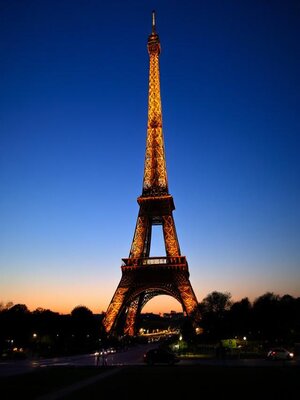
Sign up to save your library
With an OverDrive account, you can save your favorite libraries for at-a-glance information about availability. Find out more about OverDrive accounts.
Find this title in Libby, the library reading app by OverDrive.



Search for a digital library with this title
Title found at these libraries:
| Library Name | Distance |
|---|---|
| Loading... |
The Eiffel Tower (Tour Eiffel) is one of the most famous landmarks in the world, located in Paris, France. It was constructed as the entrance arch for the 1889 Exposition Universelle (World's Fair) to celebrate the 100th anniversary of the French Revolution.
History & Construction
Designed by Gustave Eiffel and his engineering company.
Built between 1887 and 1889 in just over two years.
Originally criticized by many artists and intellectuals in France.
It was intended to be temporary and was supposed to be dismantled after 20 years. However, its usefulness as a radio transmission tower saved it.
Architecture & Design
Made of wrought iron and weighs around 10,100 tons.
Stands at 330 meters (1,083 feet) tall, making it the tallest structure in Paris.
It was the tallest man-made structure in the world until the Chrysler Building in New York was completed in 1930.
Interesting Facts
The tower has three levels accessible to visitors, with restaurants and observation decks.
It is repainted every 7 years with about 60 tons of paint to prevent rusting.
The Eiffel Tower expands in the summer due to heat, growing by about 15 cm (6 inches).
It attracts nearly 7 million visitors annually, making it one of the most visited monuments in the world.
During World War II, the French cut the elevator cables to prevent Nazi use.
Modern-Day Significance
A symbol of France and Paris, often used in movies, art, and culture.
Hosts light shows every evening, with 20,000 bulbs sparkling for 5 minutes every hour.
Used for various scientific experiments, including wind resistance and radio broadcasting.







